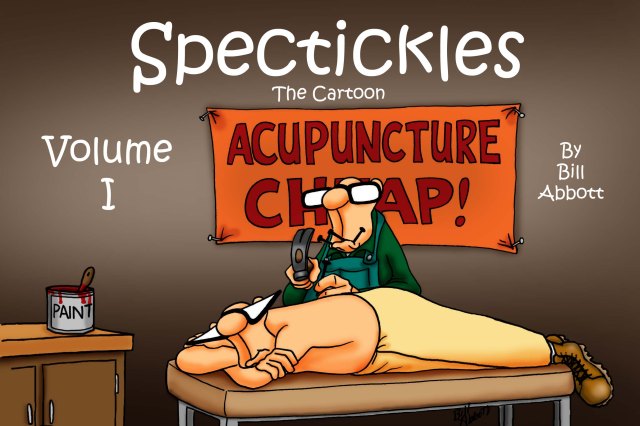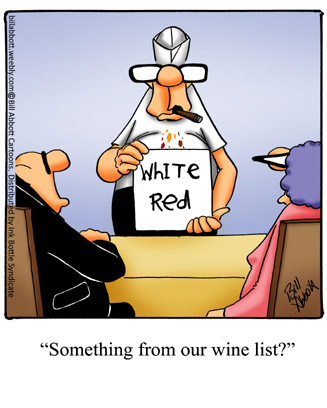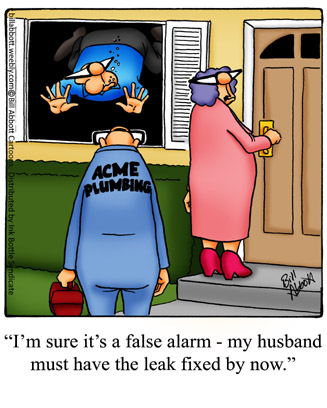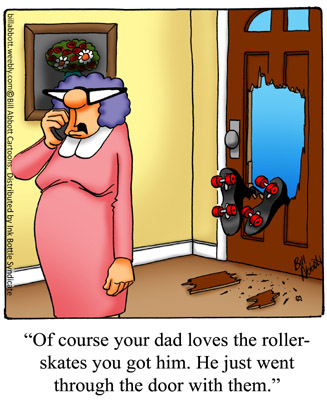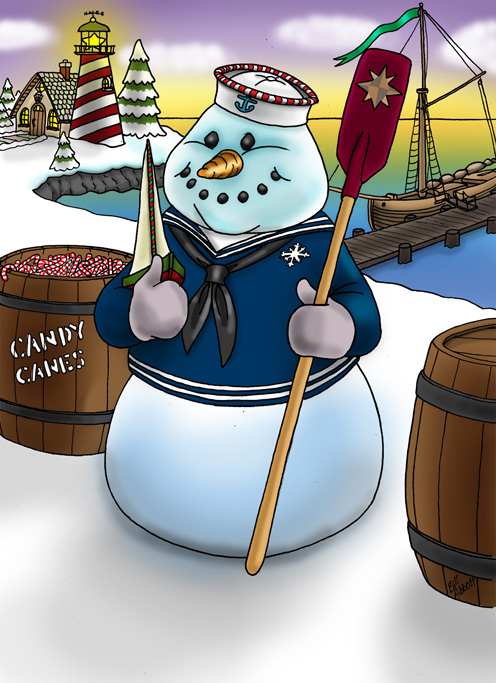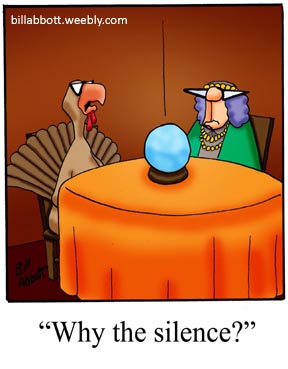As I’ve mentioned, I’m passionate about the art, history, business, and all things cartooning. In learning to be a cartoonist, I’ve had the great good fortune to meet a lot of extremely talented and experienced cartoonists whose generosity of time and knowledge has been an inspiration. I’ll be starting a series of interviews with some of my favorites, including Dan Rosandich, Brad Diller, and Crowden Satz. You’ll find their responses informative, insightful, and enjoyable reads. You’ll note too how diverse their backgrounds are, which says to me that it doesn’t matter where you come from or what age you begin – if you have an interest in the art, just begin. My intention is to post these interviews on Mondays – not every Monday, but when one is conducted, that’ll be the day to look for it, and they’ll be on their own dedicated page. Just click on the name and enjoy. That said, let’s begin: Dan Rosandich
Dan Rosandich Interview
1. At what point in your life did you realize you wanted to make cartooning your profession? I realized early on (maybe 5 years old I was already doodling and redrawing comics from the papers) I wanted to get into cartooning. I’ve never had any formal art schooling or training in the art of cartooning . . . just a deep-seated love of drawing and a passion for expressing myself through cartoon imagery.
2. Do you have a cartoonist hero that inspired you? If so, who and why? Not really any “hero” per se or a creator that actually inspired me, but admired alot of different creators work. Those in the comic strip world included Schulz (who didn’t right?), Garry Trudeau’s Doonesbury and the Sunday Funnies that had the Katzenjammer Kids, Snuffy (the Bodacious one) Smith, Alley Oop and one offbeat strip back in the 70’s I enjoyed was by a magazine cartoonist and the strip was called Captain Easy . . .I think I liked it because of the creator’s unusual drawing style and that he made the leap from magazine gag cartooning to actual syndication. In comic books, I always found the underground comics and strips to be intriguing. The one aspect of underground cartoonists and the comics they created, was the fact those artists could express themselves without any editors looking at what they created, they were independent and published their own material….it was a unique way of using the First Amendment. I think at a young age I realized what “mavericks” they were. Robert Crumb was/is a favorite and artists like Spain Rodriguez and Griffith’s work come to mind besides several others. In the magazine gag genre, there are so many favorites I’d rather not start….it’s an endless list and I know many of them and have been in touch with so many hard working devoted and talented artist’s but that genre has always been my favorite, simply because you can get published in virtually any magazine that used or uses cartoons if you focus your efforts hard enough.
3. Where did you sell your first cartoon? Mechanix Illustrated bought my first cartoon out of the very first submission I made to them. They weren’t even a bonafide user or supposed market for the kind of cartoons I began creating, but I chose them simply out of curiousity and whether or not the editor there would like my work and obviously he did. This was back in 1976 and he paid me a whopping $35 when that amount was a decent price for a single image. Ironically after all those years, I recently re-connected with that same editor who’s still in the publishing business and edits medical books for McGraw-Hill and he found me via my profile on the LinkedIn business site. The magazine is no longer in print but the memory of that first sale is indelibly etched in my head.
4. Have you ever pursued syndication? I’ve never pursued syndication since it wasn’t something I really endeavored to do. You need a unique concept and very fine tuned writing abilities that compliment your concept, although I have done alot of self-syndication throughout the years. With the newspaper business in such a low economic state, it’s difficult to predict whether or not syndication is really the route for a cartoonist to follow although there are those unique and steadfast individuals who will devote a million percent to getting their work accepted and they deserve that platform. During my self-syndication endeavors, the most subscribers I’ve had using my work are about 50 papers and as I say, self-syndication is doable if those cartoonists want to spend money in promoting their work and negotiating with editors. In fact, as I write this, I am awaiting a response to an editor that owns three weekly newspapers who asked me to quote her a price to reprint my panels each week in each of her three newspapers.
5. At one time you had thousands of cartoons circulating in batches to the various cartoon markets. Do you still use this or a modified version of this method? I wish those days were happening again! After my first magazine cartoon sold, I dove in head first, building up a list of magazines I targeted in which I wanted to show my work to. I slowly found myself with 300, then 500 and then 800 to 1,000 different single panel cartoons in motion at any given time. This is 10 to 15 cartoons per “submission”. At my zenith, I was just over 2,000 cartoons in motion and the number of actual “buyers” was in the dozens who I would have to keep records on, then when I’d get return submissions back, set aside a day, or two or three days re-batching all incoming work to resend to new editors who hadn’t seen specific cartoons. Cartoonists had great resources for potential cartoon markets that were supplied in specialized newsletters published with titles like ‘Cartoon World’ by George Hartman in Lincoln, Nebraska, and also Loyal Pallady’s ‘Funny Papers’ out of Minneapolis or Paul Swan’s ‘Toon In’ which came out of Texas. I traded my monthly Cartoon Worlds with a fellow magazine cartoonist who sent his ‘Gag Recap’ published in New Jersey by Al Gottlieb and we’d trade other market news or editors who were deadbeats, slow-to-pay markets or just complain about editors who may have lost or spilled coffee all over a returned batch of originals. I simply don’t send to any magazines anymore, since a majority have either stopped publishing (because of the web and moved online) or cannot afford cartoons since losing advertising revenues to online competition. But I was lucky to be a part of the marklet when it was flourishing in the 70’s, 80’s and into the 90’s . . . even daily newspapers which published Sunday issues had supplement magazines that used my gag panels and they paid decent rates, so there were other avenues of getting your work out there or different ways of selling your stuff…the Cleveland Plain Dealer had it’s own magazine, The Milwaukee Journal and papers in Atlanta, Denver and elsewhere were always looking. If you got your work in certain magazines, you’d also get “reprint requests” by book publishers who wanted to reprint them in college textbooks. Book publishers like John Wiley and Sons would contact me whenever I’d have something in Science Digest and in fact John Wiley offered more money since they wanted to use the work in educational textbooks and as you may know, textbooks are one of the most expensive aspects of a college student’s budget. And textbook publishers are still a ripe market for the single panel gag genre.
6. What is your process in creating cartoons? My process is very basic. I pencil in my rough artwork, and ink it in using a Koh-I-Noor Rapidograph or use a Sharpie Finepoint marker. The paper I use these days is also a multi-use standard copy paper (94 brightness) that seems to hold a line from both tools relatively well. Othertimes, I may “freehand” my idea on a sheet of copy paper and lay a blank sheet over that and simply redraw or “fine toon” my layout in pencil if it’s a more elaborate or complicated concept, but really, I have no scientific approach….I draw in either a more reserved style or a more “bolder” line depending on my creative mood. If it’s an idea that is best suited for color, I’ll toss that black and white line art onto the HP all-in-one and scan it into Photoshop and colorize it as I see fit and my program there is also very basic (one of Photoshop’s earliest versions) which is version 6.0 and there are still parts of that program I have yet to learn or perfect.
7. Do you use an agent to help find you work? I’ve often though of it, but no. And after careful research, soon came to the stark realization that it’s best for me to represent myself (I like to be in complete control that way). I’ve heard that some agents take 35% up to 50% and not certain if that’s really true but I like the marketing and promotional aspect of advertising what I do and what I am able to offer those professionals out there, so I have always repped my own work. I’ve learned some of the subtle and not so subtle nuances of negotiating with art directors and editors over the years….at times I realized I underbid myself and at other times I lost potential work because I was too high in my quotes but in retrospect, those stumbling blocks were part of my learning curve in the art of negotiation. At times I was caught off guard and suddenly realized how low my bid was, when the editor or creative director countered me by offering a higher fee. Those times have been few and far between but have happened!
8. Do you license your cartoons for other purposes such as greeting cards, calendars, etc.? By all means, I think to proactively sell yourself to the existing market, you need to be multifaceted so to speak. Don’t paint yourself into a corner by being just a gag cartoonist, or by being just a greeting card illustrator etc. If you can find success in just one aspect of a certain field, that is great….but I haven’t really known someone in that situation. When I’ve circulated my promotional samples, I’ve sent them to book publishers, magazine editors, greeting card companies, advertising agencies, newspapers, newsletter publishers, coloring book companies, consulting firms and the like and at one time or another, I have had work assigned from all of these areas of professional publishing. By expanding my services onto the web, I get inquiries from similar places at different times throughout each year so it’s also in your favor to get an online portfolio or catalog established with which to promote your work and what you can do for those professionals who may be out there searching.
9. What are your thoughts on the changing face of the cartoon markets? As the cartoon markets change, so must we cartoonists evolve with them. When the magazine market began to fade due to the web’s influence, I hated the fact I needed to get online or move what I was used to doing, onto an electronic platform. I knew I would somehow have to adapt and learn web design, digital software programs like Photoshop, Frontpage, WordPress and so many others. Many editors were requesting digital files and I was literally forced to adapt, so rather than fight, I think cartoonists and any creatives need to simply accept the market as it changes. I had to put all my work online and it wasn’t easy but glad that I eventually did. In my little infographic, I mention using “leap logic” which can also assist us in our quest for finding new potential clients. Look at what may be on the horizon with new publishing software, you may see something others don’t. Approach a software company with your thoughts to get feedback from them, make a proposal and see what they say. You just don’t know what new idea my be the next big “Content Is King” concept! Approach a consultant in one of the many professional fields on what they foresee as a good use for your work. By employing a small bit of leap logic and connecting with the right professional(s), you just don’t know. I’ve made many proposals and have had some interesting feedback which in turn has fueled further ideas I can take elsewhere and / or use in the future. The changing face of the so called cartoon markets is just that, changing, it’s omnipresent and if you see a hole that can be filled, make a presentation with some well thought out plan or business proposal.
10. What advice would you give to aspiring cartoonists trying to break in? Giving advice. . . certainly a tough call in this business climate but today, try to divide your approach. Look at it from a major and a minor standpoint. A steady job will of course be your “major” that will allow you to generate a steady income and pay important bills each month while working on your “minor”. Look at what you want to do with your minor….is it comic strips? You have the best idea since Calvin & Hobbes and would your idea supercede that? Or do you want humorous illustration as your minor? Have a printer make up 1,000 11X17 inch brochures with samples of your work on both sides and fold that in half, or then fold again to fit in a no. #10 business envelope, send those out to the 1,000 best ad agencies, or 1,000 best book publishers you can find lists for….test that out. I think that’s modest. Your response may be minimal but a start. Or depending on your style and how you present samples, you may blow the art or creative director’s mind and get a nice contract. If that happens, you’ll then be able to decide if your job merits any further time. But I would balance out an “approach”, in this manner first. I was pretty much able to dive in at the time I started cartooning because the market was wide open….there was no digital realm and the entire business was “print based”….now it’s a completely different animal. Other factors like the economy are also considerations, along with any personal considerations (student loans, outstanding monthly expenditures etc). I won’t say art school isn’t something you shouldn’t consider, but in recent years, I’ve heard so many horror stories where students come out of certain art schools with huge loans to pay off and no where to start finding “work” or assignments. Some cartoonists who feel they have a portfolio to present, will go right into the editorial offices – in the old days, gag cartoonists would be walking from magazine office to magazine office in Manhattan and “mooing” like cattle because there were so many magazines they could show their work to (open cattle calls were the norm on Wednesdays)! That can’t be achieved today, so the next best thing is to make up your own cartoon or illustration portfolio and if you seriously believe your work is a sellable commodity and worthy of consideration, make your own contact list and see those editors or creative directors with what you’ve got. “Finding Your Niche” I mention in my infographic is something you seriously need to take into consideration.
* Dan offers thousands of cartoons for licensing via his online web catalog and provides web designers his daily web cartoon that auto-updates every 24 hours. He has been a fulltime cartoonist and humorous illustrator for almost 40 years.



